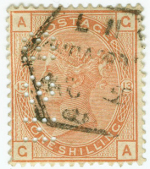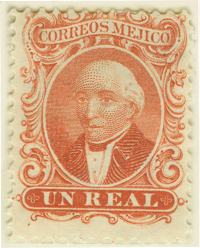
Discussion - Member to Member Sales - Research Center

Discussion - Member to Member Sales - Research Center

Dry inking (not to be confused with dry printing) is caused by the ink roller not having enough ink and the inking process does not allow enough ink to cover the stamps.
Ink stripping is when the ink roller has too much ink causing it to clog and as a result of overfilling, causing the stamp to stick and when the roller passes over the stamp will tend to remove some of the stamps relief or most of it.
King George V stamps have numerous errors of both dry inking and ink stripping though it is seldom to find dry inking in King George VI issues, and rare to find a block of stamps showing the progressive rate of dry inking .
Below is a rare block of 4 1949 ½d wallaroos showing progressive dry inking (in stages); the very scarce 1938 thin paper blue 3d has been severely affected by ink stripping.
Progressive dry inking

Severe ink stripping compared to an unaffected scarce thin paper of same type on the left

1938 thick paper showing a lesser degree of ink stripping compared to an unaffected thick paper of same type on the left.

There are many stamps that are affected by too much strong light and/or affected by a chemical accidentally or deliberately applied to that will giving them an appearance of a scarce or rare stamp, such stamps have very little to no value at all.

Login to Like
this post

Even though both stamps look very much the same in defect that is where the similarity ends, the error process is quite different.
Dry inking (not to be confused with dry printing) is caused by the ink roller not having enough ink and the inking process does not allow enough ink to cover the stamps.
Ink stripping is when the ink roller has too much ink causing it to clog and as a result of overfilling, causing the stamp to stick and when the roller passes over the stamp will tend to remove some of the stamps relief or most of it.
King George V stamps have numerous errors of both dry inking and ink stripping though it is seldom to find dry inking in King George VI issues, and rare to find a block of stamps showing the progressive rate of dry inking .
Below is a rare block of 4 1949 ½d wallaroos showing progressive dry inking (in stages); the very scarce 1938 thin paper blue 3d has been severely affected by ink stripping.
Progressive dry inking

Severe ink stripping compared to an unaffected scarce thin paper of same type on the left

1938 thick paper showing a lesser degree of ink stripping compared to an unaffected thick paper of same type on the left.

There are many stamps that are affected by too much strong light and/or affected by a chemical accidentally or deliberately applied to that will giving them an appearance of a scarce or rare stamp, such stamps have very little to no value at all.

Login to Like
this post

